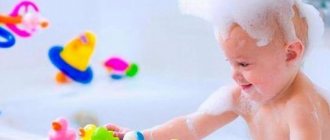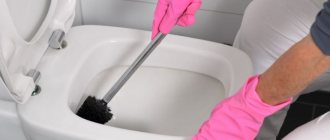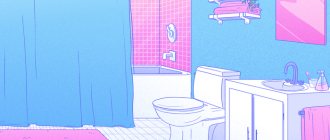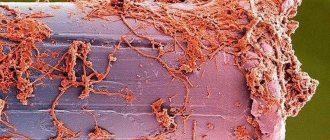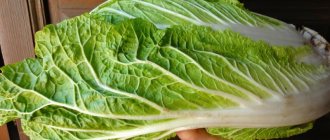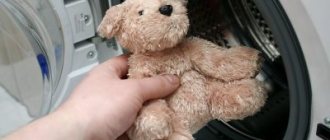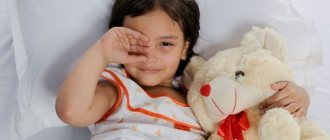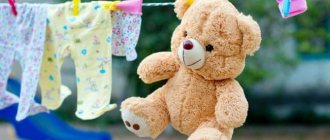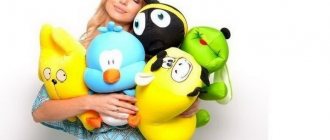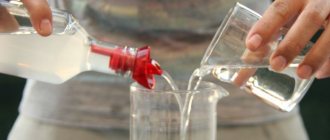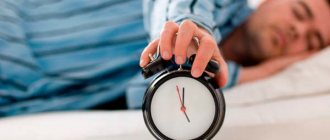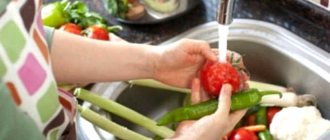How to clean children's toys? Safe, fast and effective. There are general guidelines, but some parents are less strict about cleanliness and hygiene than others. In this case, the frequency of treatments depends on you. It's entirely your choice, just like your parenting style. But pay attention to the end of the article: it tells you why cleaning toys is important.
Let's divide the instructions for cleaning toys into 5 main categories.
, by type of toys.
So, let's go.
How to Clean Plush Toys
Most plush toys come with tags that tell you the cleaning procedure. Sometimes only external cleaning is allowed, no washing, and that's okay. However, if you are determined to wash
toy, you can certainly do it. If you don't need to wash, but just need to remove dust, you can vacuum the toy (to prevent the sewn elements from coming off, put the toy in old tights, and then vacuum through them).
- Stuffed Toys
But let's get back to the laundry.
After washing, fur stuffed animals tend to change slightly and lose their original appearance, so keep that in mind. Without a real need to wash a toy, especially a child’s favorite one, it may not be worth it.
There is a category of soft toys for babies that are designed for frequent washing, they are usually without fur/lint, and after washing they really are like new. If you love cleanliness always and everywhere, choose these toys.
What soft toys cannot be washed?
- musical (if the sound module is not removed)
- old and fragile
- with glued elements (sequins, ribbons)
- if the toy has thin non-removable elements of clothing/decor
- if the toy is stuffed with anything other than polyester fibers (for example, foam balls, beans, sawdust, cherry pits)
Regular powder is suitable for washing the toy, but it is better to use something safer for the child, i.e. odorless products. Add oxygen bleach if toys are discolored or smell bad.
How to wash toys in a machine?
Take an old pillowcase (preferably with a clasp - with buttons or a zipper), put toys in it. Place the resulting bag in the drum of the washing machine. It is better to use a gentle cycle with cold or warm (not hot) water. If the water is too hot, it may melt glued items. When the wash cycle is complete, shake out the toys and brush the fur with a fine-tooth comb.
You can dry it in different ways.
You can place the pillowcase with the toys in the dryer on the lint cycle or dry them in the sun. Usually, however, a spin of 1000 revolutions is enough to get almost dry toys that will dry out just in the room.
Your plush toys should be in great shape!
What if hand wash only?
For toys that can only be hand washed, or that fall under one of the 5 points mentioned above, hand washing with a mild detergent or baby shampoo is fine. Gently spread the soap mixture throughout the toy, working in a circular motion. Then rinse the fabric thoroughly and remove any remaining soap. Air dry indoors or in the sun.
Electronic friends
There are toys, when caring for which you need to avoid contact with water so as not to damage them. What to do?
- Radio-controlled cars and plastic musical instruments can be placed in the freezer for a couple of days, after removing the batteries. Parasite eggs and some harmful bacteria die at low temperatures. After removing the toy from the freezer, wait 1-2 hours before inserting the batteries. This is necessary so that condensation evaporates from the contacts of the electronic mechanism.
- However, if a child regularly tries to treat a singing soft bunny to porridge, this method of care will be ineffective, since it will not be able to remove dirt. In this case, you can sacrifice the toy's vocal abilities by removing the music block. Fill the resulting empty space with padding polyester and carefully sew it up. After such an “operation”, the toy can be washed in the company of other plush friends.
Burda Media
How to clean toys made of plastic, rubber or silicone without batteries
Soft plastic and rubber toys.
Soft plastic and rubber toys are best washed in the sink rather than the dishwasher, as these materials are more susceptible to melting and deteriorating in hot water. Thin, flimsy plastic toys fall into this category. To clean them, simply add soap and warm water to the sink, bucket or bowl. Then clean the toy by wiping it with a soft cloth or an old toothbrush. Then rinse well in cool water.
- Toys for babies
To disinfect toys, dilute a spray (50/50 mixture of alcohol and water), spray and let sit for a minute. Rinse and dry again.
If you don't care much about toys, collect them in a laundry bag, place the bag on the top rack of the dishwasher, and run the sanitizing cycle. If the toys melt, don't say we didn't warn you.
Sometimes you have to take risks with rubber toys that have been in the bathtub for a long time and have turned black, moldy on the inside, and started to smell bad. You can try washing them in this risky way: it’s better than throwing them away right away, because it usually helps.
Hard and hard plastic toys.
Toys such as rattles, Legos, Lego Duplo, etc. can be thrown into a thin bag and placed in the dishwasher as mentioned above.
Silicone toys.
They can be washed in the dishwasher (on the top rack) or boiled in a saucepan for cleaning and sanitizing.
Dry cleaning
Large dimensions, natural fillers, and built-in electronic parts do not allow the products to be washed either manually or in a machine. For them, there is an effective and safe method of cleansing without water.
To do this you will need a plastic bag and baking soda. Several toys are placed in a bag, 50 grams of soda are poured into them and shaken vigorously for five minutes. Next, a vacuum cleaner will help get rid of the remaining soda that has absorbed dirt.
For very large items, 240 and 280 liter waste bags can be used.
How to clean dolls and wash doll hair?
Let's see how to clean the hair of dolls and other toys (Barbie, Ken, My Little Pony, etc.).
The dolls' hair is thin plastic strands. Wash the doll's head with a couple of drops of liquid soap, massage them into the hair to the base. Then rinse well with cool water and lay to dry, and it is better to comb right away to avoid tangles. If your hair is seriously damaged or has lost its shine, becoming dull and matte, soak the strands in a small bowl of conditioner and water overnight and then rinse. Using a comb, carefully comb out all the knots.
Cleaning the body of dolls
Hard plastic doll bodies can be cleaned with a few simple tricks.
To remove marks and stains, dilute a paste of vegetable oil and soda. Using a cotton swab, apply the mixture to the stains in a circular motion, then rinse with a damp cloth. Make sure you don't remove paint (facial features, nail polish)!
For tough stains, use a little nail polish remover: apply to a cotton swab, then rinse well.
To disinfect these toys, the same 50/50 mixture of alcohol and water will come in handy: spray the toy from head to toe. After a minute, wipe with a dry cloth
Washing in a washing machine
If the manufacturer allows and the product is strong enough, it can be cleaned using a washing machine.
Washing in a washing machine
The procedure is not much different from washing clothes, but has a number of nuances:
- all mechanisms and electronic elements must be removed;
- using a special bag allows you not to worry about the safety of seams and parts;
- Delicate wash mode recommended;
- Additional rinsing is required;
- machine drying and spinning are not used;
The machine is capable of removing all stains more efficiently and will not damage the product if all recommendations are followed.
How to clean wooden toys?
Wood itself has antibacterial properties. However, sometimes they become dirty and need to be cleaned.
Soak a cloth in vinegar and wipe down wooden toys from time to time. Vinegar will clean and act as a mild disinfectant and is a great method for cleaning wooden toys. By the way, they don’t need to be cleaned too often. The vinegar smell will dissipate after a few minutes.
If wooden toys (for example, blocks) are not painted or have lost their appearance and color, you can sand them and they will become as good as new!
Detergents
All children's clothes require the use of appropriate detergents.
Cleansing of soft companions is also carried out with means approved by pediatricians:
- powders, gels and conditioners for children;
- laundry soap;
- baking soda;
- baby soap;
Washing gel
All of them have good cleaning properties and are completely washed off with water.
Why is it important to clean toys?
There are many reasons that we can discuss, but the most important of them is the health of children
.
What causes a cold?
Contrary to its name, a cold is not caused by exposure to cold air - it is caused by a viral infection. The common cold is also known as an upper respiratory tract infection and can be caused by about 200 different types of viruses. Studies have shown that people exposed to the respiratory virus got colds, while people simply exposed to cold air did not get sick. Interestingly, those exposed to the virus plus cold air were not more susceptible to the virus than those exposed to the virus alone.
Why then are colds more common in autumn and winter? Cold weather doesn't give kids colds, but it does make them spend more time indoors
, where they spread viruses to each other. Staying indoors with the windows closed increases the likelihood of catching a cold, and the damp air outside makes the situation even worse. In winter, the spread of the virus is inhibited by frosty air.
How to prevent the spread of a cold?
It is inevitable that a child will sometimes get a cold. Infants and toddlers average 10-12 colds per year, preschoolers average 5-6 per year, and older children and adults usually get fewer colds. The good news is that exposure to viruses helps children develop immunity to help prevent future colds and more serious illnesses. A healthy routine with good nutrition, adequate sleep and exercise helps keep the immune system strong.
Since children always get sick (the younger the child, the more often), and because they always play with toys (including each other’s toys, especially in kindergarten and children’s groups where toys are shared), cleaning toys is crucial for maintaining health, especially during cold months indoors
.
Whitening
Fluffy faux fur turns yellow or gray over time. It is possible to fight it, but use only gentle means. Bleach containing chlorine and other aggressive components will easily ruin the pile.
ARTICLE FOR YOU
How to wash bed linen without fading: in a washing machine and by hand, frequency of washing, is it worth washing new ones?
Several recipes and available ingredients can be used to whiten children’s clothes:
- An aqueous solution of lemon juice in one to one proportions is sprayed onto the pile using a spray bottle. After fifteen minutes, the remaining solution must be removed with a damp sponge.
- Hot bran will cleanse the thick, long hair. Sprinkle them on the product, leave for ten minutes and shake out well.
- Potato starch absorbs dust well and removes gray color. It is suitable for toys that cannot be washed or wet. The starch is evenly applied and rubbed into the fur or plush material until completely clean. Next, the product needs to be vacuumed.
- Bleach or stain remover labeled “for children’s laundry” will cope with difficult stains. Before use, be sure to read the instructions.
All these remedies will return white toys to a fresh look and will not harm the child.
Reviews from moms
Natalya, 21 years old (young mother). After my 1.5-year-old son suffered from an intestinal infection with a high fever and vomiting, I began washing Nikita’s toys every day with a soap and soda solution. I don’t use other products because my son is allergic.
Victoria Sergeevna, 37 years old (teacher). All our lives in the group, we wash our toys with soap and soda solution. When children first come for adaptation, even twice a day. They get older - every day. We once had a quarantine due to shingles - everything was washed with a special “Purzhavel” product twice per shift.
Karina, 32 years old (mother of many children). Our house is always full of children - both our own and our neighbors'. When three of my four children had chickenpox at the same time, it was very scary. To prevent worse things from happening, I have to wash my toys with soap and baking soda 2-3 times a week.
SanPiN rules for preschool educational institutions
Sanitary standards developed by the state for preschool institutions provide for the daily treatment of toys with a soap and soda solution:
- All new items are disinfected before entering the group for at least 15 minutes.
- In each group, toys are washed daily at the end of the day, in the nursery - twice a day.
- Doll clothes are treated with the same composition as they become dirty.
Such activities ensure the safety of children using toys in kindergarten. But sometimes these measures are not enough.
During quarantine
During the period of widespread viral infections, usually in early autumn, after children return to kindergarten, the risk of epidemics increases.
If quarantine is declared at a preschool educational institution due to any disease, then enhanced measures are taken:
- The first treatment is during the children's nap - with a soap and soda solution.
- The second - at the end of the working day using a 0.015% Purzhavel solution or 1 Deo-Chlor tablet per 10 liters of water.
- Soft toys are prohibited during quarantine.
On a note. Even stricter preventive measures do not always help curb the spread of some infections. Therefore, in case of certain diseases, toys are removed from the group for the entire quarantine period.
Chemical properties of soap-soda solution
The effectiveness of such a disinfectant is determined by the content of alkalis, which easily cope with most contaminants, pathogenic microorganisms, and molds.
Soap and soda solution is used:
- for processing toys, washing floors and dishes in children's and medical institutions;
- in the treatment of skin and fungal diseases in a baby;
- in everyday life for disinfecting furniture, kitchen utensils, children's things, toilets and bathrooms.
The soap-soda solution is hypoallergenic, does not damage the surfaces being treated, does not dissolve paint, and at the same time effectively removes dirt and kills germs.
It is safe for children and adults.
